
views
Shaping Fondant Carnations

Roll the fondant into a flat sheet that’s ⁄8 in (0.32 cm) thick. Use a rolling pin to flatten the fondant, applying gentle pressure as you move the pin back and forth to make sure the entire fondant is an even thickness. You can use any color fondant you want for your carnation. To prevent the fondant from sticking to the rolling pin or work surface, dust both the surface and the rolling pin with a little cornstarch before you begin, or apply a thin layer of shortening. To change the color of your fondant, squeeze a few drops of gel coloring onto the fondant. Then massage it in, kneading the fondant to spread the color evenly throughout.
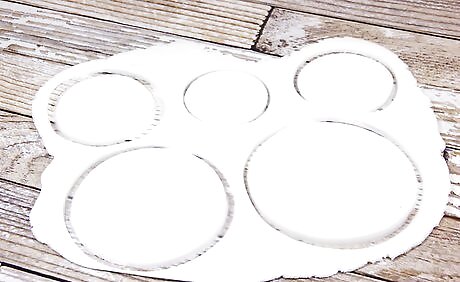
Cut out 5 circles in different sizes. Use fondant cutters or cookie cutters to form your circles from the flattened fondant. Start with the largest circle, which will be the base of your flower. Then make a slightly smaller circle, continuing to decrease the size for each of the remaining 3 pieces. Adjust the diameter of the circles as needed to create smaller or larger flowers. For fuller flowers, cut out more than 5 circles. If you don’t have fondant or cookie cutters, you can use anything that has a circular shape, like the bottom of a drinking glass. Press it into the fondant and cut around it with a knife.
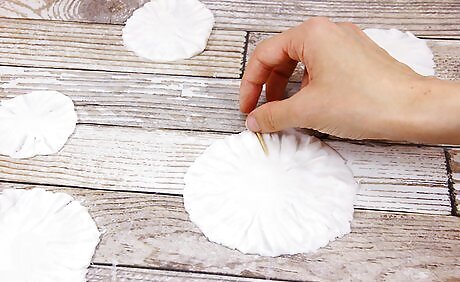
Roll a toothpick around the edges of each circle to create ruffles. Press the length of the toothpick lightly into the fondant. Rock it back and forth, moving it around the perimeter of the circle. This causes the fondant to curl up into a ruffled edge. Repeat on all 5 circles. Be careful not to press too hard so you don’t cut through the fondant with the toothpick. You just want to make an indentation. Some bakers choose to lay their fondant on a foam shaping mat during this step. It provides a little cushioning for the flowers to prevent them from ripping or sticking to the counter.
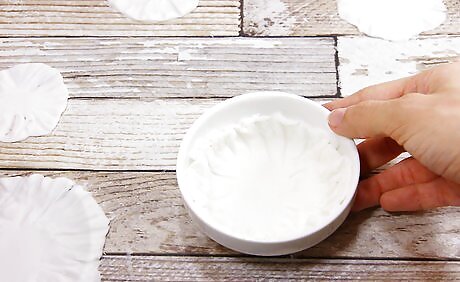
Press the largest circle into a fondant forming cup. This will be the bottom of your flower. Set it in the fondant forming cup so that the edges curl up slightly, giving you a nice curved shape instead of a flat flower. You can use a small ramekin or even an empty egg carton instead of fondant forming cups. If you’re worried about the fondant sticking to the cups, sprinkle some cornstarch on the inside of the cups first.

Brush water onto the circle with a small paintbrush. The water will act like glue to hold the flower together. Use just enough water to dampen the top of the fondant. Avoid soaking it through or using so much water that it puddles in the center of the circle. Don’t use a paintbrush that has been used for paint or any other toxic substances. Buy a brand new one that hasn’t been contaminated.
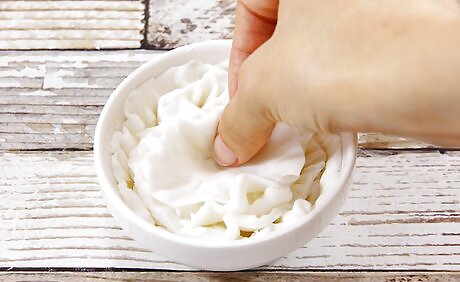
Place the 4 other circles on top, brushing water in between each layer. Arrange the 4 circles in decreasing size order so that the smallest circle is the last layer. Use a dab of water between each of the fondant circles to “glue” them together. Press down lightly on each layer as you set it in the fondant cup to adhere it securely to the previous circle.
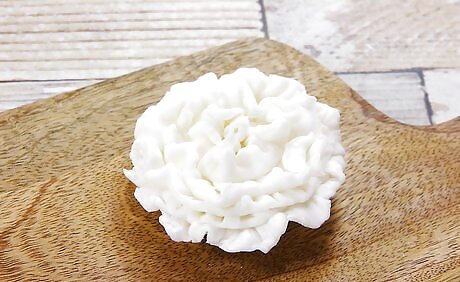
Let the flowers dry for 24 hours before using them. Place the flowers in a dry, room temperature spot to harden. The drier the flowers are, the better they’ll hold their shape. Store any flowers you aren’t using right away in an airtight container in the fridge for up to 2 weeks. Ideas for Decorating Your Fondant Flowers Stick a shimmery sugar pearl in the center of the flower. Paint designs on the petals with a small paintbrush dipped in food coloring. Add green fondant leaves to the base of your flower. Use petals in all different colors for a whimsical effect.
Making Fondant Roses

Roll the fondant into a rectangular shape that’s ⁄8 in (0.32 cm) thick. You want the fondant to be thin enough that the flowers don’t look clunky, yet thick enough that it won’t rip when you’re forming the petals. Use a rolling pin with gentle pressure to evenly spread out the fondant on a flat surface. Spread a layer of shortening or sprinkle cornstarch onto your surface if you want to prevent the fondant from sticking. Use pink or red fondant for realistic roses. However, you can use any color you'd like. Trim the edges with a knife to create your rectangle, if necessary. Make Your Own Marshmallow Fondant Ingredients:1 10 oz (0.28 kg) bag of mini marshmallows2 to 3 tablespoons (30 to 44 ml) of water4 cups (950 ml) of powdered sugar Directions:1. Melt the marshmallows and the water in the microwave, stirring every 30 seconds. 2. Blend the powdered sugar into the marshmallows with an electric mixer or a spoon. 3. Knead the dough on a flat surface for about 7 minutes until it's shiny and soft. If it’s too dry, add ⁄2 tablespoon (7.4 ml) of water at a time. 4. Wrap the ball of fondant in plastic wrap and place it in the fridge for up to 2 weeks.
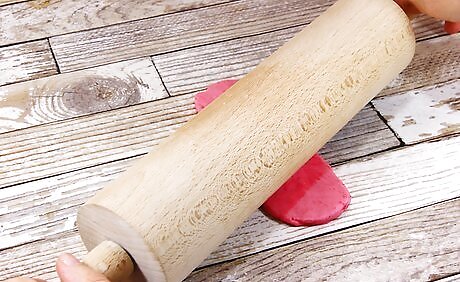
Cut a strip of fondant that’s 1.5 to 2 in (3.8 to 5.1 cm) wide. The length of the strip doesn’t matter but the width shouldn’t be more than 2 inches (5.1 cm) or the rose will be too chunky. A butter knife will be sharp enough to slice through the fondant. Cut as many strips as you want roses. Each strip makes 1 rose.
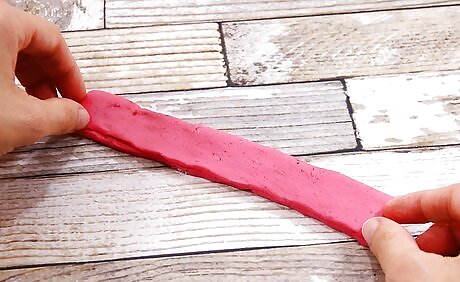
Fold the strip in half lengthwise. Line up the long edges of the fondant to make sure you fold the piece exactly down the center. Don’t smash the 2 sides together. Just rest them on top of each other so you can still see the crease between them. If you’re having trouble folding the fondant, you may have a piece that’s too thin. Re-cut a wider strip.
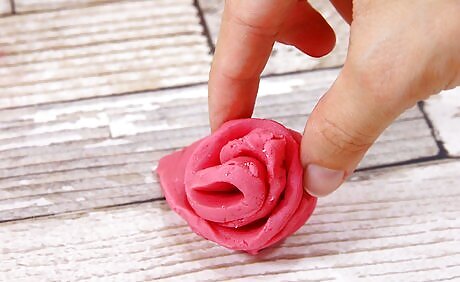
Roll the strip up, pinching the bottom to form a cone shape. Keep the open edge facing up. Squeeze the bottom of the folded strip between your thumb and forefinger as you roll so it tapers down into a slight point. The tighter you roll your strip, the smaller your rose will be. If you wind up with extra fondant at the bottom, simply pinch it off with your fingers. Brush a little bit of water along the strip before you begin rolling if you want the rose to hold its shape better. The water acts as glue.
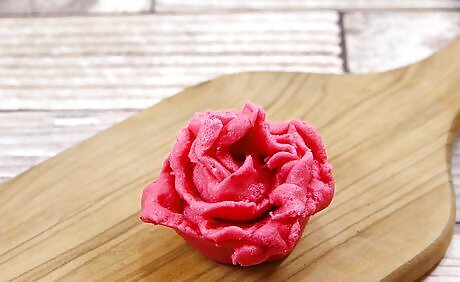
Set the roses in a room temperature spot to dry for 24 hours. Don’t use the roses immediately to decorate a cake or they’ll fall apart or become misshapen. Letting them dry first will harden them into their flower shape. If you aren’t using your roses right away, store them in the refrigerator in an airtight container for no more than 2 weeks.
Creating Fondant Flowers with a Mold
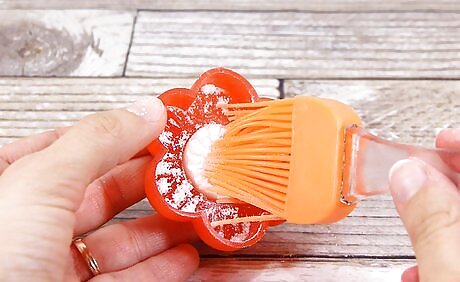
Dab cornstarch into each of the molds with a small paintbrush. The cornstarch will prevent the fondant from sticking to the mold. Use a brand new paintbrush that hasn’t been used before, so there aren’t any harmful paint chemicals on it. Be sure to coat every little crevice in the mold. If there’s a lot of excess cornstarch in the mold, flip it over and tap it gently to remove the extra powder.
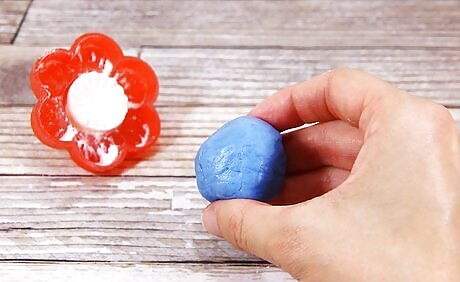
Break off a piece of fondant that’s about the same size as your mold. If you’re using a very small flower mold, you’ll need a smaller piece. Don’t worry if it’s not exact; you just need enough fondant to at least fill the mold. If you want, you can roll the fondant out into the size of your mold. It may make it easier to press the fondant evenly into the mold later on, but it isn’t necessary.

Press the piece of fondant into the mold, filling it completely. Use your fingers to firmly push down on the fondant, making sure you get it into every nook and cranny. It’s okay if your fondant spills out over the mold. It’s better to overfill it than underfill it. If your piece of fondant doesn’t fill the entire mold, break off more fondant and press it on top of the original piece.
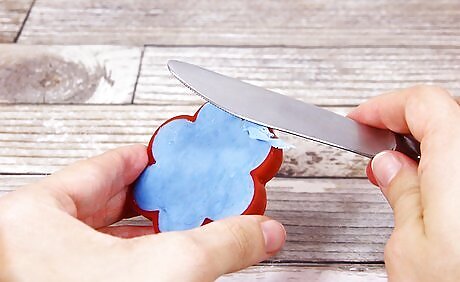
Shave off any extra fondant from the mold using a knife. Use a sawing motion to work the knife carefully along the top of the mold, pulling away the excess fondant with your fingers as you go. This should smooth out the fondant inside the mold. If you don’t flatten the top of the mold (which will be the bottom of the flower), you’ll have trouble sticking the finished flower to a cake or cupcake. You can use an icing spatula instead of a knife.
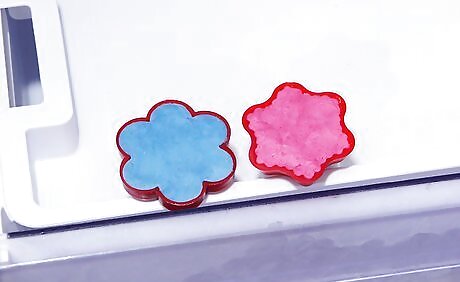
Place the filled molds in the freezer for 20 minutes. This hardens the fondant so that it’s easier to remove from the molds. Set the flowers on a shelf where they’ll sit flat and won’t be disturbed. Set a kitchen timer or use the clock app on your phone to keep track of the time.
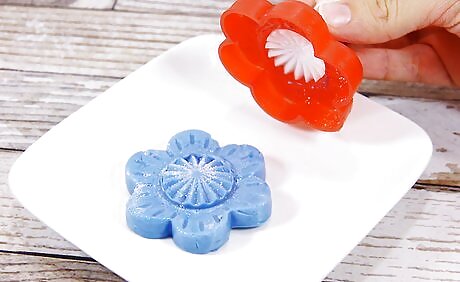
Remove the molds from the freezer and pop the flowers out of the mold. They should come out easily. Work quickly so that the flowers don’t warm up in the molds, making it more difficult to get them out cleanly. Be careful with the flowers when you’re removing them. They aren’t completely dry yet, so too much force could alter their shape. If the fondant won’t come out of the mold, leave it in for a little longer before trying again.

Let the flowers dry for at least 24 hours. Set the flowers in a room temperature spot to harden. If it’s too warm, the fondant won’t dry as well, or the flowers will lose their shape. Keep any flowers you aren’t using immediately in an airtight container in the fridge for up to 2 weeks. How to Attach Fondant Flowers to a Cake Water: Brush a dab of water onto the back of the flower to stick it on. Sugar glue: Melt a little bit of marshmallow fondant with water to create a glue-like paste. Shortening: Rub a thin layer onto the cake or cookie before placing your flower on top.




















Comments
0 comment